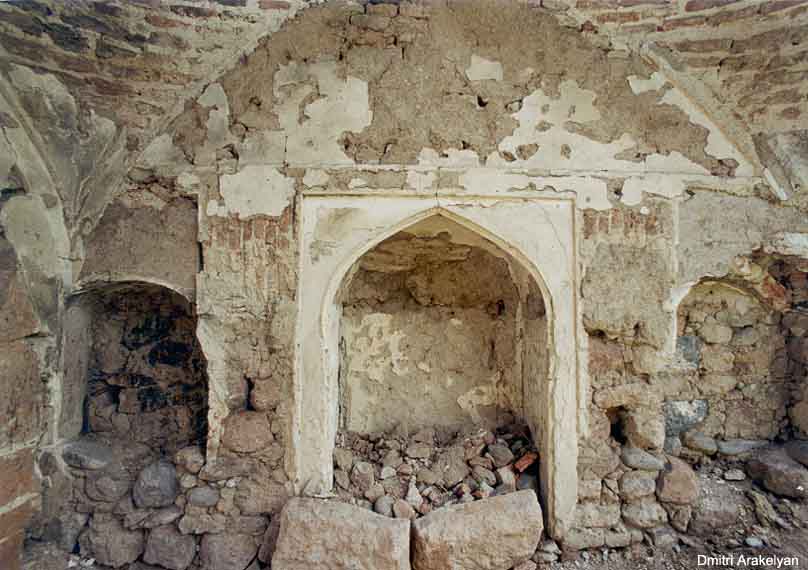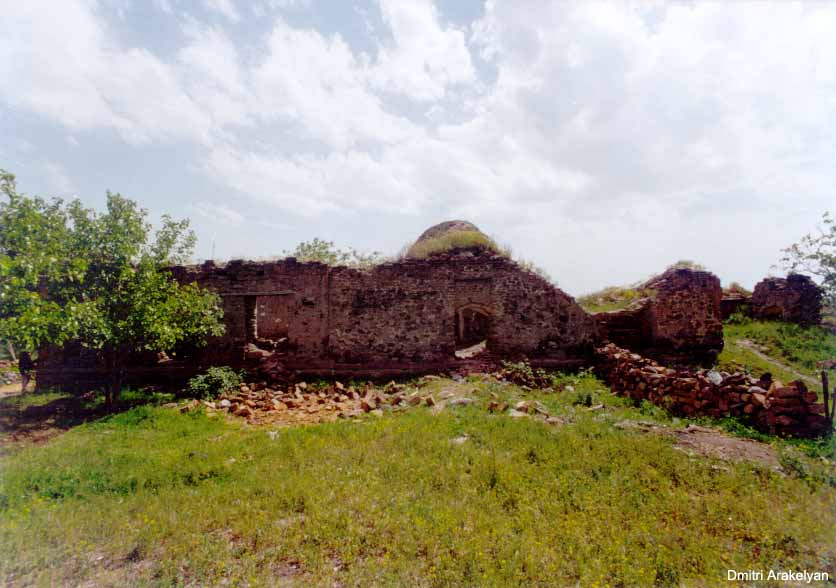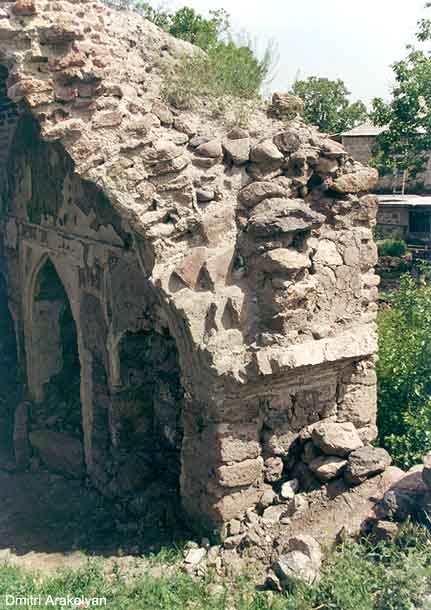Akarak village mosque
In Echmiadzin uezd of Iravan Governorate, now in Akarak village in Ashtarek district.
Ashtarak district – Ashtarak, Akarak village – Agarak. It was included in the administrative territory of Aragatsotn governorate on 7.11.1995.
Architecture
The Akarak village mosque, with its top roof and part of its outer walls in a state of collapse, is one of the large mosques in Western Azerbaijan, after Iravan, that have survived to this day in a state of side collapse.
Akarak village mosque was approximately 30-35 meters long, 8-10 meters wide and 4-5 meters high. The thickness of the outer walls of the mosque built with river stone was (approximately) 80 cm and 1 meter thick. The two-room mosque with a wide arched entrance door also had a square door on the wide side. The second room was used as a madrasa and Quran course. It is written as Ayrak in the detailed book of Iravan governorate compiled in 1590, as Ayarak in the summary book of Iravan governorate. It is marked as Akarak (Agarak) on the 5-verst map of the Caucasus. The village had 318 people in 1831, 388 people in 1873, 536 people in 1886, 603 people in 1897, 629 people in 1908, 720 people in 1914, 653 people in 1916, and 425 people in 1919. Only Azerbaijanis lived there. At the beginning of 1919, the village residents were subjected to Armenian aggression and were deported. Armenians were resettled here from the Van, Gavash, and Bitlis regions of Turkey in 1918-1919. Azerbaijanis were able to return to their villages after the establishment of Soviet power in the territory of present-day Armenia . In addition to the Armenians, 72 Azerbaijanis lived here in 1922, 74 in 1926, and 32 in 1931.



























